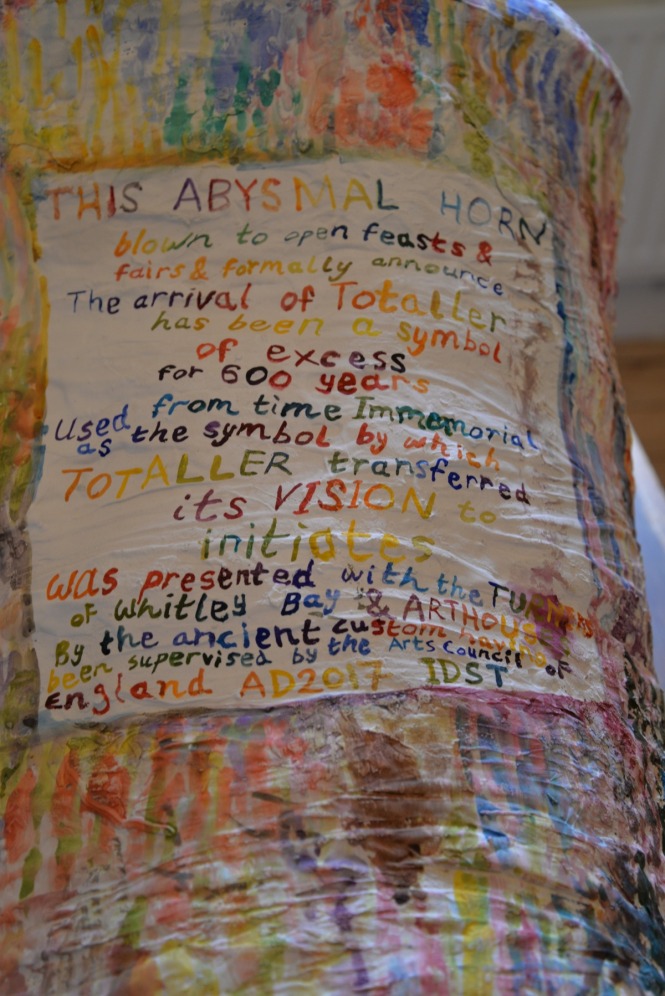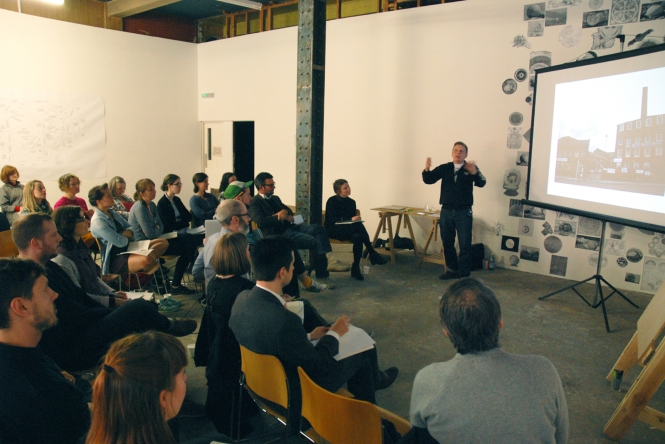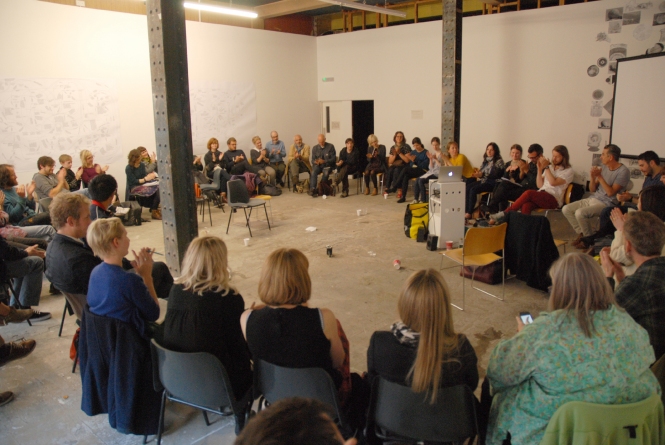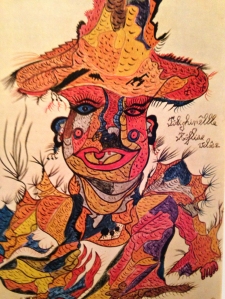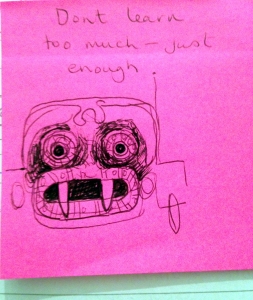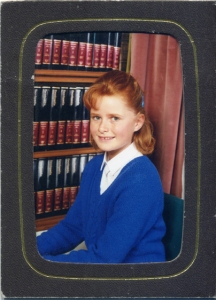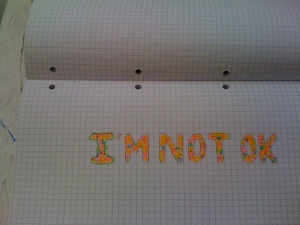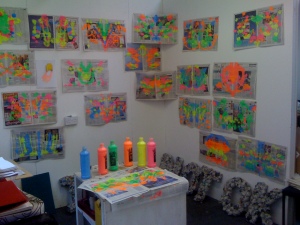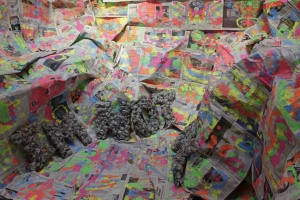- I was born, and lived for a time, in a greenhouse. My world was hot with sunshine coming in, not getting out. Imagine all that heat trapped behind the glass, bouncing around and being sucked up. It was a big place that stretched on for miles and was filled with little green families getting hot and fat and red together. Our lifecycles are swirling stories where hands pick, hands throw, hands put food in the mouth. We ripened and became desirable, the pivotable players in an exchange as unintelligible or as simple as photosynthesis and digestion. We were happy in our ignorance, we didn’t realise we were delicious.
- ‘Do you have the right time?’ people ask, looking at me with squinted eyes. They look at me and all around me trying to fix their position in time from my position in space. I hold you people where you are, planted in the earth by your feet, heads pointing up at me, the length of your upright bodies casting shadows. I am the golden cosmic fruit shining in the sky. The centre of our system. Keep your eyes on me.
- I am hungry for love, rip out my beating heart and throw it at the Sun. Ssssss.
- Spaghetti al Pomodoro (serves 4)
Heat the olive oil in a large saucepan over medium heat. Crush the garlic cloves with the heel of your hand, add to the oil, and cook, stirring occasionally, until golden brown, about 5 minutes.
Add the red pepper flakes, and then crush the tomatoes between your fingers, letting them fall into the saucepan. Stir in the tomato juices, and season with salt to taste.
Simmer the tomato sauce over low heat until slightly thickened, about 20 minutes. Add the basil sprigs to the sauce, and set aside.
To cook the pasta, heat a large pot of water. When the water reaches a boil, add a pinch of salt and the pasta. Cook until the pasta rises to the surface of the water, about 5 minutes. Drain the pasta, reserving about 1 cup of the cooking water.
Remove the basil sprigs from the tomato sauce and discard. Transfer the spaghetti to the saucepan and toss over medium heat to combine. Add a drizzle of olive oil, divide into four warmed bowls, and serve immediately. (Recipe courtesy of Eataly)
- “Are you hungry? You go to their ‘restaurant’ [usually a hut serving food]. Are you thirsty? You buy a bottle of water from the gang master for 50 cents. Do you need a girl? You pay the prostitutes the gang master is pimping,” explains Sagnet. The labourers would work everyday from the crack of dawn until the late afternoon in extreme heat for a daily wage of around €20. Sagnet says the workers would usually shake branches of tomatoes into large three-ton containers for as little as €3.50 per container. (From Red gold and blood money: the fight to end modern slavery in Italy’s agricultural sector by Matteo Congregalli http://bit.ly/2mohqdY)
- Children of the Sun sacrifice your red flesh here. X. It’s time to get real, I made you who you are so throw your soft juicy bodies at me in thanksgiving. Give yourselves freely and with love. Vote for me, be votive for me for I am the Sun and if you have any doubts here is my manifesto: Take me. Take me. Take me. Take me. Take me. Take me. Take me. Take me. Take me. I’m yours. This is the real order of things.
- I’m making a massive effort. I don’t like getting up and I don’t like doing things. I have been mostly unproductive except for pissing into the compost. Someone sent me some money the other day, I took the cheque and sent a note in reply, I said ‘Your money will be spent lavishly without return. Squandered. Up in smoke. No receipts’. I’ll use my fee to buy tobacco, I’ll roll it up into little cigarettes and smoke it or put it in a pipe. This piece needs some real work, some dedicated thinking time – I think it could be a two pipe problem. I need to lie in the Sun for a little while, I need to nurse my sore head, I need to get some energy, can one of you make me a bloody mary? I am prodigious. I am a funny girl. I am hungry.
- I’m the greatest star
I am by far
But no one knows it
That’s why I was born
I’ll blow my horn
‘Til someone blows back
I gotta break the lights
I’m gonna make ’em fight
I’ll flicker and flare up!
All of the world’s gonna stare up!
Looking down you’ll never see me,
Try the sky cause that’ll be me!
I can make ’em cry!
I can make ’em sigh!
Someday they’ll clamor for my drama
Have ya guessed YET!
Who’s the best yet?
If ya late I’ll tell ya one more time
You bet ya last dime
In all of the world so far
I am the greatest, greatest
Star!
(I am the greatest star, from Funny Girl by Bob Merrill and Julie Styne)
- This is not an expression, it is a transfer of energy dedicated to the Misunderstood Perplexed Audience (MPA). We Give – We receive.
- The incongruous tomato went up in smoke.. The MPA lamented and cried ‘Why smoke the tomato?’ The artist scratched her head and said ‘It had to go somewhere. I don’t care if you eat it into your body or smoke it into your mind – just use it or lose it’. She starts drawing out a graphic – message – system that reads: TOMATO IN YOUR MIND.
- She writes a story in which the Sun, an artist, a fruit picker and a tomato sit down together for lunch…
- An explosion. Hands reach in and squeeze my brothers and sisters into sauce but the psychic cycle of energy never concludes it just finds new form. The greenhouses and fields abound with cosmic materialism. We’ve worked the clock around and can’t go on. Movement of information becomes a protest becomes a redirection. Tomatoes fly… Information, feeling, movement. head trance (head fuck?). All the messages are reflecting back on themselves – this thing is eating itself, fuelling itself. There’s nowhere for the energy to go now except…BANG!
Originally part of the installation Take Me To Your Leader part 2, Samuel Worth Chapel, Sheffield Cemetery, November 2017.



